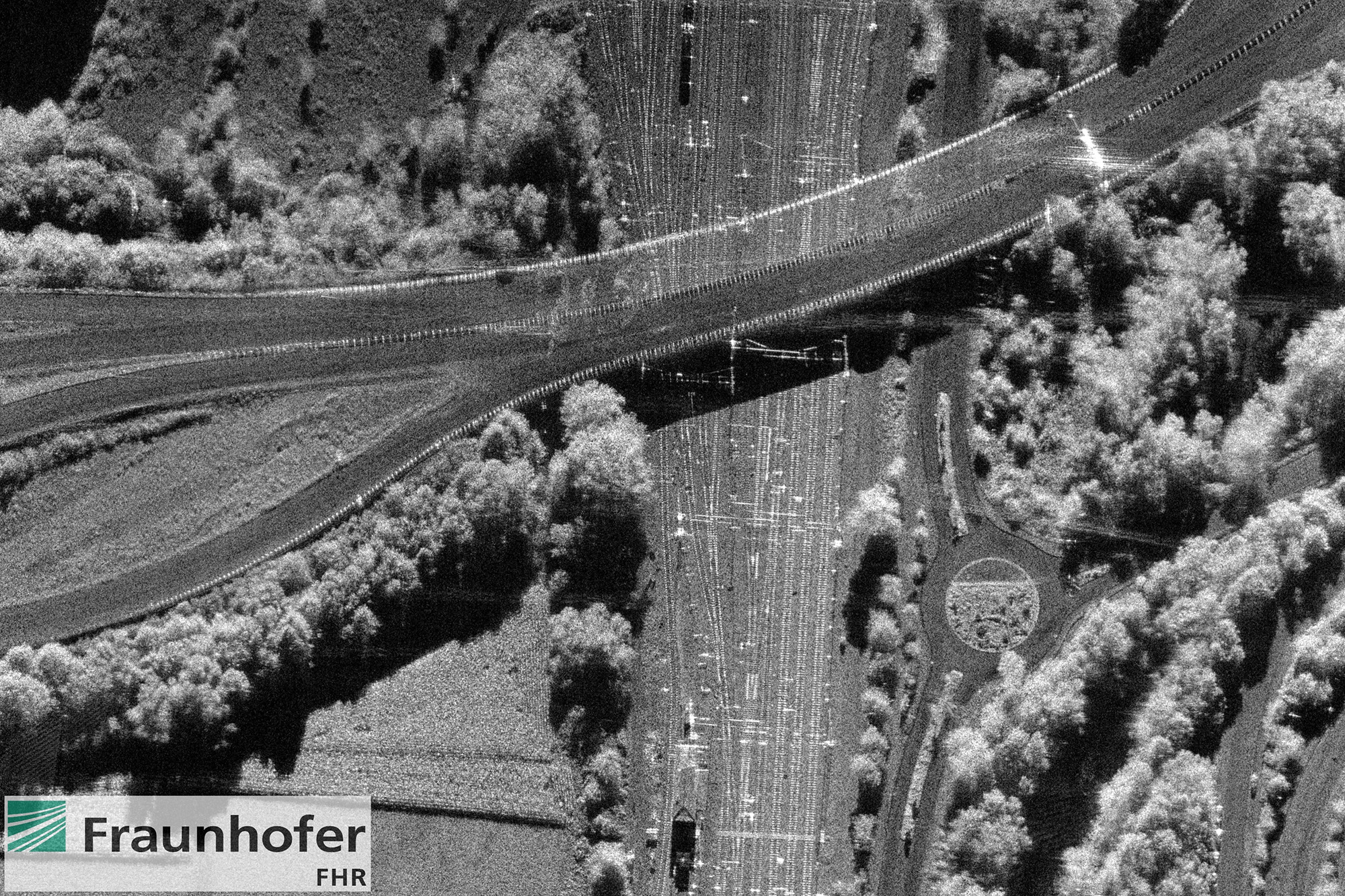„Instantaneous Infrastructure Monitoring by Earth Observation“ (IIMEO)
Monitoring of critical infrastructure from space: Fraunhofer FHR is working on the IIMEO project
The Fraunhofer Institute for High Frequency Physics and Radar Techniques FHR is participating in the "Instantaneous Infrastructure Monitoring by Earth Observation" (IIMEO) project. The project is funded by the European Union under the Horizon Europe program as an Innovation Action with 2.8 million euros and aims to develop and demonstrate key technologies for global monitoring of critical infrastructure from space in near real-time. The pilot application is the monitoring of rail networks. The project runs until November 30, 2025.
Consortium partners of the project, in addition to Fraunhofer FHR, are Universitet U NISU (NIS), Fondazione Bruno Kessler (FBK), Antwerp Space (AWS), the Institute for Applied System Technology Bremen (ATB), and OHB Digital Connect GmbH, which also coordinates the project. Within IIMEO, Fraunhofer FHR is working on the concept development of a small-satellite NewSpace development prototype for real-time and high-resolution SAR/EO Earth observation of critical infrastructure from space. The future low Earth orbit (LEO) constellation of small satellites will be equipped with an imaging radar (Synthetic Aperture Radar, SAR) operating in the Ka-band and having a minimum resolution of 50 cm. "Fraunhofer FHR is developing and validating novel algorithms for high-resolution real-time processing of Ka-band SAR data up to level 1 and provides the real-time processed data to the further change detection processing chain. This also includes concepts for later SAR/VIS fusion considering different illumination modes," said Dr. Stephan Palm, IIMEO project leader at Fraunhofer FHR. "Furthermore, Fraunhofer FHR will provide an adapted Miranda 35 Ka-band FMCW SAR as a test platform to acquire the necessary data for validating the algorithms in several measurement campaigns. In addition, the sensor must be integrated into OHB's aircraft. The data is expected to be collected with parameters as similar as possible to those expected in a later LEO constellation. At the end of the project, based on the developed demonstrator and concept, there will be a live demonstration of critical infrastructure for real-time evaluation," Palm added.
"Energy supply, communication, and transportation - globalized society is highly dependent on functioning infrastructure. Typical examples include roads and railways, but also water pipes, data cables, and power lines," explained OHB project coordinator Daro Krummrich. "The criticality of these infrastructures for daily life becomes evident, especially when disruptions occur. These can be caused, for example, by natural disasters, extreme weather events, or targeted manipulation. To be able to restore the functionality of critical systems quickly after an incident, a rapid overview of the overall situation is important. Therefore, IIMEO aims to detect infrastructure malfunctions automatically, over large areas, and in near real-time, regardless of local weather conditions and lighting."
Specifically, the project aims to develop a satellite system in line with New Space principles. Since global coverage and revisit times of less than an hour are required for infrastructure monitoring, the project partners believe that a suitable constellation in low Earth orbit (500 to 900 kilometers altitude) consists of at least 24 small satellites. The payload will be imaging radar instruments (Synthetic Aperture Radar, SAR) complemented by sensors for the visible light (VIS) wavelength range. This will enable high-resolution images to be generated even at night and in heavily clouded areas.
Also in line with New Space approaches, the development of algorithms is also a focus of the project. As enormous amounts of data are produced through continuous global monitoring of infrastructure using SAR and VIS sensors, it is necessary for this data to be processed on board the satellites to avoid data-downlink becoming a bottleneck of the system. Davide Di Domizio, Research Programme Administrator at the European Health and Digital Executive Agency (HaDEA), explains, "In 2022, the ambitious goal was set in the Horizon Europe work programme to demonstrate the performance of key technologies for future Earth observation systems by 2028. With the development of the planned on-board data processor, IIMEO is well positioned to make an important contribution to this mission."
After the development phase is completed, all relevant key technologies will initially be combined into an aircraft-borne technology demonstrator. The goal of the planned flight campaign for 2025 is to demonstrate the end-to-end prototype downstream service, including on-board data processing. The automated detection of obstacles on railway tracks will serve as an example application, with the national society for the management of railway infrastructure in Serbia being won over as a cooperation partner and pilot user. "A satellite-based automatic monitoring system enables high-quality information to be collected about the condition of infrastructure in real time without disrupting regular traffic or requiring personnel on site," emphasizes Dipl.-Ing. Slobodan Rosić, risk manager for Serbian railway infrastructure.

